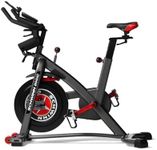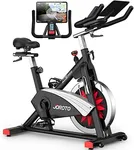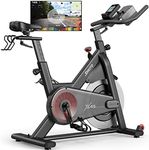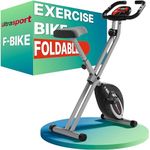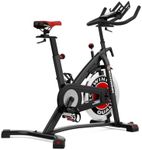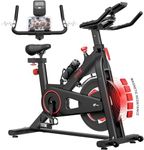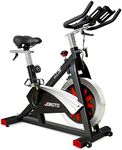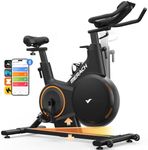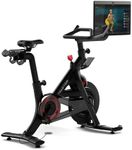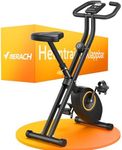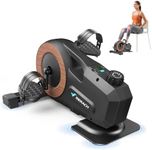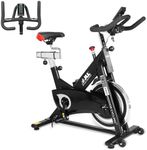Buying Guide for the Best Indoor Exercise Bike
Choosing the right indoor exercise bike can significantly enhance your fitness routine by providing a convenient and effective way to exercise at home. When selecting an exercise bike, it's important to consider your fitness goals, available space, and personal preferences. Understanding the key specifications will help you make an informed decision that aligns with your needs and ensures a satisfying workout experience.Type of Exercise BikeThere are three main types of indoor exercise bikes: upright, recumbent, and spin bikes. Upright bikes are similar to traditional bicycles and are great for general fitness. Recumbent bikes have a reclined seating position, providing more back support and comfort, making them ideal for those with back issues or joint pain. Spin bikes are designed for high-intensity workouts and mimic the feel of road cycling. Choose the type that best matches your fitness goals and comfort preferences.
Resistance MechanismResistance is what makes pedaling harder and helps you build strength and endurance. There are several types of resistance mechanisms: magnetic, friction, and air. Magnetic resistance is quiet and offers smooth transitions, making it suitable for home use. Friction resistance is more affordable but can be noisier and requires more maintenance. Air resistance increases with pedaling speed, providing a more dynamic workout. Consider how much control you want over your workout intensity and how important noise level is to you.
AdjustabilityAdjustability refers to how much you can modify the bike to fit your body size and shape. This includes seat height, handlebar position, and sometimes pedal straps. Proper adjustability ensures comfort and reduces the risk of injury. If multiple people will be using the bike, or if you have specific ergonomic needs, look for a bike with a wide range of adjustments to accommodate different body types.
Display and ConnectivityThe display on an exercise bike can show various metrics such as speed, distance, time, calories burned, and heart rate. Some bikes also offer connectivity features like Bluetooth or app integration, allowing you to track your progress over time or connect with virtual cycling classes. If you are motivated by tracking your fitness data or enjoy interactive workouts, consider a bike with a comprehensive display and connectivity options.
Weight CapacityWeight capacity is the maximum user weight that the bike can safely support. It's important to choose a bike that can accommodate your weight to ensure safety and durability. Most bikes have a weight capacity ranging from 250 to 350 pounds. Always check the manufacturer's specifications and choose a bike that exceeds your current weight to allow for any future changes.
Footprint and PortabilityThe footprint of an exercise bike refers to the amount of space it occupies. If you have limited space, consider a compact model or one that can be easily folded and stored. Portability features like wheels can make it easier to move the bike around your home. Assess the space you have available and how often you might need to move the bike to find a model that fits your lifestyle.

